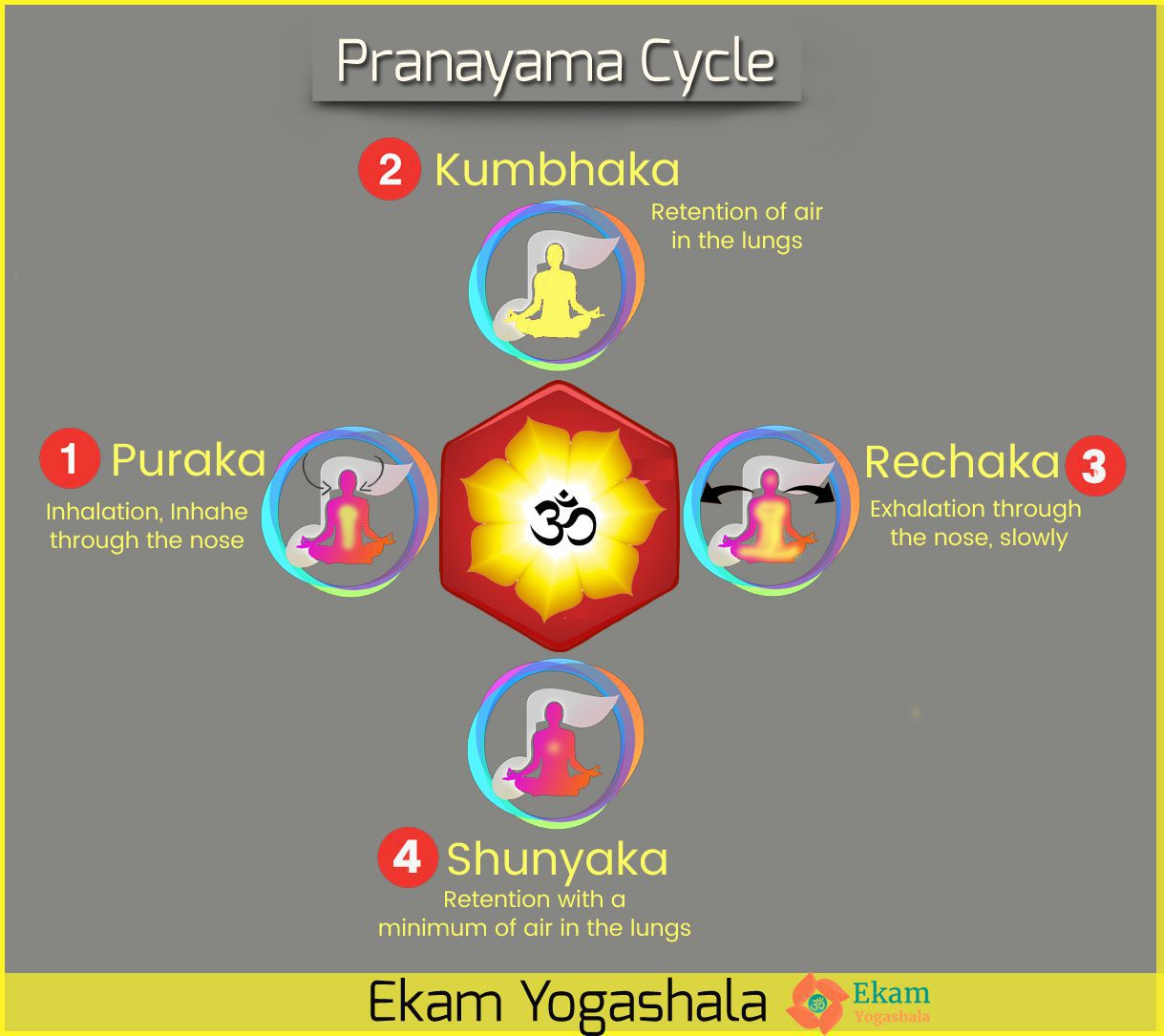We have 8 elements in Yoga. The term “Ashtanga” translates to “limb.” Just as we need our limbs to survive, you need the “limbs” of Yoga to become
proficient in yoga. We find this in Patanjali’s Yoga Sutra. Using these guidelines, we can live a full and meaningful life. For this, one must gain mastery over all aspects or limbs of yoga.
Yama: This constitutes the first element of yoga. This involves our standards and sense of integrity. It keeps us from doing wrong things and helps us to survive on a daily basis. There are five Yamas – Asteya (non-stealing), Satya (truthfulness), Ahimsa (non-violence), Aparigraha (non-greediness), and Brahmacharya (bachelorhood). These are the “do not” of spiritual life. It is a self-regulatory behaviour involving our interactions with others.
Niyama: It is built on spiritual practices like going to church regularly, saying grace before meals, and so on. It is the self-discipline that comes from meditation or exercises. One must develop one’s own meditation practice which might be something simple like taking meditation walks. There are five niyamas – saucha, santosh, tapa, swadhyaya, and ishvarapranidhana. It helps one attain bodily and mental purity.
Asana: This refers to a posture or position of the body. You could also say this is ‘easy posture’. Because people practice asanas, most others think of Yoga as asanas. Asana is only a step in Yoga. It helps link the body and mind through the techniques of breathing. Also, it makes your body supple and adds inner strength. Unnecessary fat accumulation is disposed of and so the body begins to appear attractive.
Pranayama: Here we have the science of breathing. You learn the proper methods to gain control over your inhalation and exhalation. Pranayama has three components – puraka (inhalation), kumbhaka (retain the breath), and rechaka (exhalation). Pranayama translates to ‘extension of life force’. You should extend your life itself by practicing yoga. It is possible to learn Pranayama alone by practicing the various breathing techniques. You have to recognize the connection between emotions, mind, and breathing.

Pratyahara: When one is able to exert enough control over one’s senses, one is said to have mastered Pratyahara. The senses no longer react to external stimuli but wait in submission to your will. This allows you to develop absolute concentration. In this sensory transcendence, one is able to withdraw back and see yourself from a new perspective. This helps us overcome our cravings. Forming habits is dangerous for our health; we learn how to subdue the process of habit formation.
Dharana: It means a concentration of the mind. When the mind is scattered, it does not have much power. But, when you concentrate on one thing or object, it becomes powerful. It means we relieve our mind from distractions. The focus for concentration can be centre of the forehead or the navel. It can also be a distant light in front of us. Once you begin Dharana you begin to step towards samadhi.
Dhyana: In this, we develop a constancy of our mind. This is one step before samadhi. Dhyana remains attached to our life at every point in time. So, we do our work with dhyana meaning we make our mind constant at that point. It means that we find a way to avoid distractions and finish our work. The mind has been quiet, and in the stillness, we see clarity. You need good stamina and strength to get to this point of stillness. Each stage we progress makes us stronger.
Samadhi: The union of our soul with the supreme soul is samadhi. We may refer to samadhi as the stopping of all impulses of the mind. The disappearance of self-awareness takes time and then you reach samadhi. It is peace and that leads to divine pleasure.
Mastering Yoga is difficult and takes time. Persist, and you will soon find yourself progressing towards samadhi.